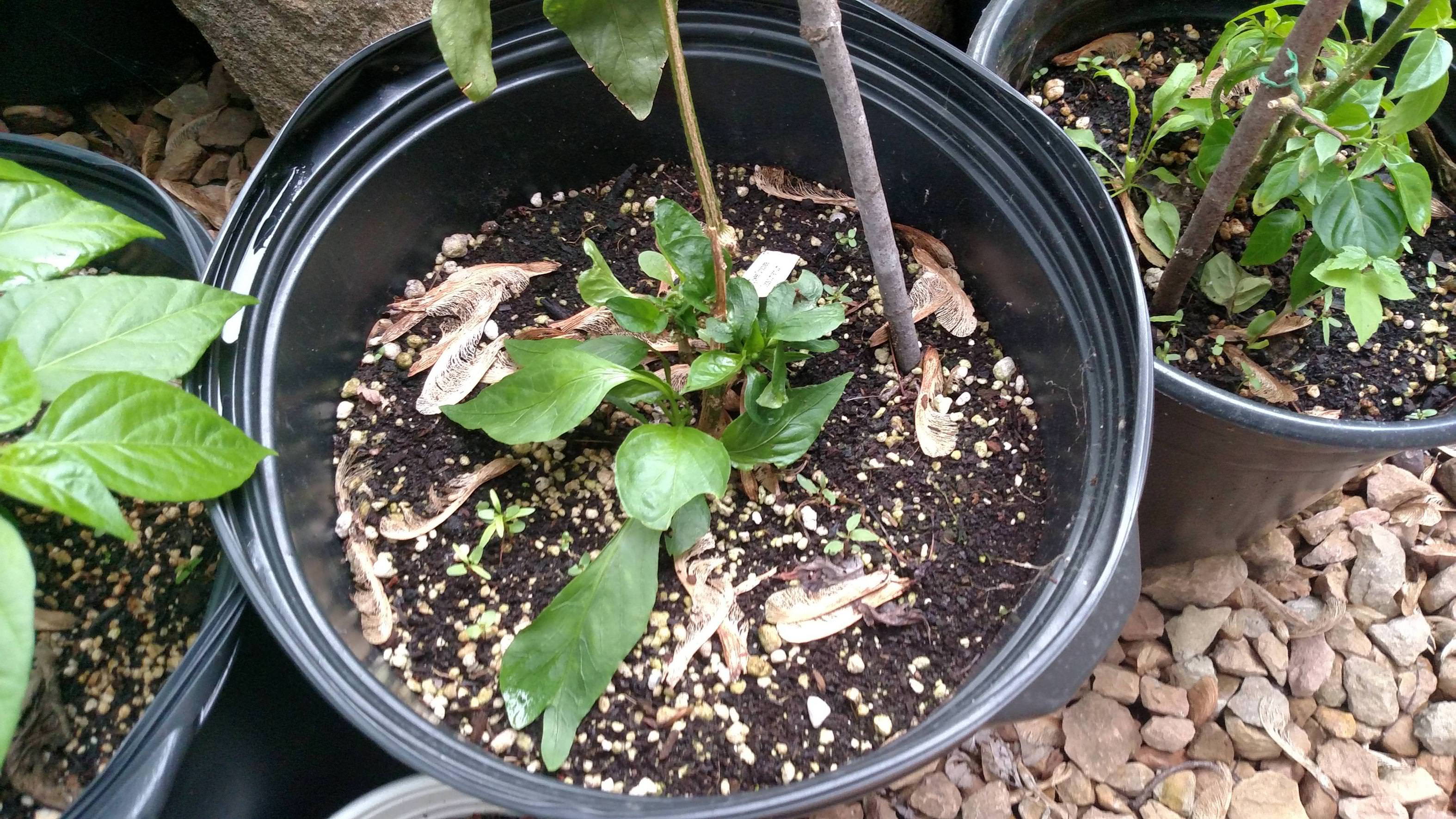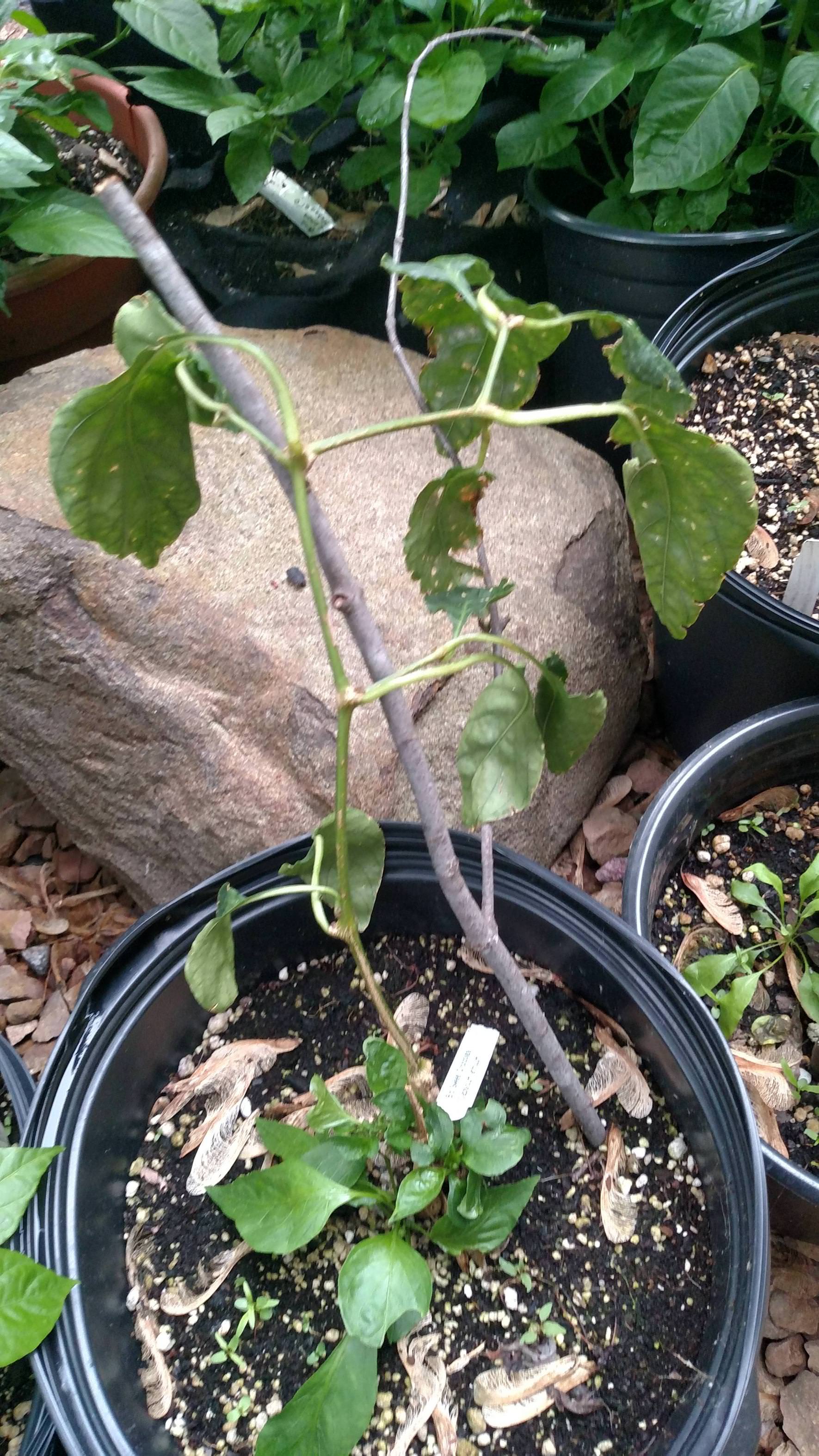Hi, I'm here to query the community's knowledge of pepper diseases/infections.
Back story: This is a Big Sweet Chocolate Pepper plant purchased May 2017 from RFC. Shortly after transplanting outside, it got smashed by a huge hail storm. It mostly came back and delivered one runty but healthy looking pod before frost last year. I overwintered the plant and treated it similarly to my other larger overwinters (essentially infrequent watering with a very low dose regiment of General Hydroponics FloraSeries). There were minor aphid problems on my larger plants all winter. Around December I noticed that the little new growth it was attempting to put out was quickly curling up and dying. This continued to happen and as time passed the older healthy leaves began to look more and more leathery. As the amount of sun it got in it's west window increased in the spring, it would constantly pump out dark green, leathery, curled up buds and leaves on it's lowest growth node. Everything quickly died and left a large calloused growth at the base.
At this point I assumed there was some bacterial infection and putting it outside for the summer would quickly lead to the old growth getting more and more damaged and the plant just dying.
This is what I have now. Growth is still highly deformed, but it's at least the correct color and not immediately dying. Old leaves are now very battle worn from the wind and other side effects of being outside. Potted in 3/3/3/1 Perlite/Coco Coir/Compost/Worm Castings and fertilized with low dose General Hydroponics FloraSeries over the winter.
All the other overwintered plants looked much better and quickly took off when I moved them back outside. No obvious issues of any kind.
At this point, Beet Curly Top Virus seems to fit the symptoms the best, but that's a big guess. Just trying to see if this is some micro nutrient issue that could still be fixed.


I can provide more pictures later if needed.
Thanks,
Peter
Back story: This is a Big Sweet Chocolate Pepper plant purchased May 2017 from RFC. Shortly after transplanting outside, it got smashed by a huge hail storm. It mostly came back and delivered one runty but healthy looking pod before frost last year. I overwintered the plant and treated it similarly to my other larger overwinters (essentially infrequent watering with a very low dose regiment of General Hydroponics FloraSeries). There were minor aphid problems on my larger plants all winter. Around December I noticed that the little new growth it was attempting to put out was quickly curling up and dying. This continued to happen and as time passed the older healthy leaves began to look more and more leathery. As the amount of sun it got in it's west window increased in the spring, it would constantly pump out dark green, leathery, curled up buds and leaves on it's lowest growth node. Everything quickly died and left a large calloused growth at the base.
At this point I assumed there was some bacterial infection and putting it outside for the summer would quickly lead to the old growth getting more and more damaged and the plant just dying.
This is what I have now. Growth is still highly deformed, but it's at least the correct color and not immediately dying. Old leaves are now very battle worn from the wind and other side effects of being outside. Potted in 3/3/3/1 Perlite/Coco Coir/Compost/Worm Castings and fertilized with low dose General Hydroponics FloraSeries over the winter.
All the other overwintered plants looked much better and quickly took off when I moved them back outside. No obvious issues of any kind.
At this point, Beet Curly Top Virus seems to fit the symptoms the best, but that's a big guess. Just trying to see if this is some micro nutrient issue that could still be fixed.


I can provide more pictures later if needed.
Thanks,
Peter
